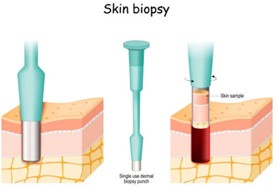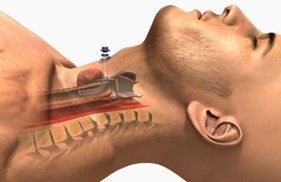The emergency department (ED) triage nurse receives a report from emergency medical services (EMS) on an older adult client being brought to the ED via EMS. After receiving the report, the nurse reviews the client's electronic medical record (EMR) for history and the most recent medication list.
1635: Most recent entry from a visit to primary care provider 5 days ago. Vital signs were BP 164/90, HR 96, RR 20, T 96.7°F (35.9°C), and SpO2 96% on room air. Past Medical History (PMH) positive for osteoporosis, a history of ovarian cancer treated with a hysterectomy and chemotherapy 16 years ago, hypercholesterolemia, and hypertension being managed with diet and exercise. During this recent visit, the client was started on hydrochlorothiazide (HCTZ) 12.5 mg, 1 tablet PO every AM. No Known Drug Allergies (NKDA). Additional home medications include:
- Atorvastatin 20 mg PO, 1 tablet every PM
- Calcium 1000 mg, 1 tablet PO BID
- multi-vitamin, 1 capsule PO every AM
The nurse obtained the bloodwork, started the IV, and administered morphine IV push.
> Complete the following sentence:
The nurse's highest priority is planning care knowing that the client is at risk for seizures due to
The Correct Answer is {"dropdown-group-1":"A","dropdown-group-2":"C"}
The nurse's highest priority is planning care knowing that the client is at risk for seizures due to hydrochlorothiazide (HCTZ) and chemotherapy.
The nurse's highest priority is planning care knowing that the client is at risk for seizures due to the recent initiation of hydrochlorothiazide (HCTZ), which can cause electrolyte imbalances such as hyponatremia, and the history of chemotherapy for ovarian cancer, which may increase the risk of seizure activity.
Nursing Test Bank
Naxlex Comprehensive Predictor Exams
Related Questions
Correct Answer is D
Explanation
After an incisional biopsy of a skin lesion, the client should be instructed to keep the suture area covered with gauze to protect it from irritation and infection. The area should be kept clean and dry, but cleansing with hydrogen peroxide is not necessary and may actually delay healing. The use of hydrocortisone cream is not recommended as it may interfere with wound healing. The area should not be left open to air as this may increase the risk of infection. The client should also be instructed to avoid strenuous activity and lifting heavy objects until the site has fully healed.

Correct Answer is D
Explanation
It is important to use the appropriate suction pressure, time, and catheter size when suctioning a tracheostomy to prevent injury and ensure effective removal of secretions.

Whether you are a student looking to ace your exams or a practicing nurse seeking to enhance your expertise , our nursing education contents will empower you with the confidence and competence to make a difference in the lives of patients and become a respected leader in the healthcare field.
Visit Naxlex, invest in your future and unlock endless possibilities with our unparalleled nursing education contents today
Report Wrong Answer on the Current Question
Do you disagree with the answer? If yes, what is your expected answer? Explain.
Kindly be descriptive with the issue you are facing.
